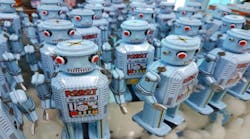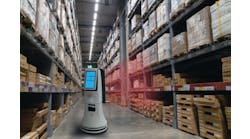Advances in artificial intelligence (AI), simulation and modular hardware continue to contribute to greater capability for robot dexterity, creating more flexible, skillful, and easier-to-operate robotic systems. Highly beneficial to addressing high-mix, low-volume production runs, these solutions are helping manufacturers of all sizes embrace the digital mindset to effectively deal with labor gaps, supply chain woes and more.
Complementing the industry shift toward low- or no-code programming to ease the robot-programming learning curve, innovative companies are offering robotics-as-a-service (RaaS) to enable highly efficient production environments. Making even high-end robotic automation accessible for organizations of all sizes across a range of industries, this unique pay-as-you-go approach provides a wealth of benefits. Let’s explore them…
Increased automation confidence
Robust automation hardware combined with feature-rich software applications provides user-friendly operation that empowers even novice users to program a robot successfully. From icon-driven programming interfaces to specialty application step-by-step wizards, multiple tools exist without needing to use complicated coding script.
While complex operations may still require the presence of a full-time robotic workcell champion—a highly trained employee fully responsible for integration, programming, utilization and maintenance of a robotic system—most companies will be able to confidently move forward using new “ease of use” tools and equipment leasing. For company leaders eyeing robot usage but are unsure if their current workforce will adapt, RaaS is ideal and does not require a capital commitment.
Lower implementation costs
When it comes to robotic automation, smaller operations may be extremely hesitant to heavily invest in upfront capital and resources. Robots-as-a-service can alleviate the financial squeeze, providing manufacturers a logical alternative to buying a robot solution outright. Plus, payback is often quickly realized. Whether through a monthly leasing agreement or a rent-to-own approach, RaaS is a smart step for maintaining the bottom line.
Greater production scalability
With traditional business models being challenged, safe out-of-the-box robotic solutions that provide easy-to-use programming allow manufacturers with limited staff to adjust for short-term or long-term needs (i.e., seasonal business). From collaborative machine-tending systems to pre-assembled robotic welding workcells, company leaders are implementing RaaS assets to accelerate throughput as requirements change.
Easy robot maintenance
Many RaaS providers remain integral key players to their clients during the contract timeframe, providing troubleshooting capability and system reprogramming for optimal uptime and ROI. Whether via offsite production monitoring or through on-site visits, comprehensive customer service provides increased reliability for organizations of all sizes.
Rightsizing RaaS
Whether the reason is to “try before you buy,” to forgo a capital expenditure or something else, interested parties are seeking solutions that best fit organizational goals. A growing list of RaaS providers sees the need for application-specific solutions and is diligently working to make them as intuitive and easy-to-use as possible for increased production efficiency.
"While robots have been making an impact in the automotive and manufacturing space for decades, the RaaS model is now reducing barriers to entry for new supply chain brands to take advantage of automation," explained Sandra Kazee, VP of finance at Ambi Robotics. "We understand each customer has different needs, so we not only design unique solutions for them, but we also offer flexible pricing models so they can meet their financial requirements."
Expected to grow at a compound annual growth rate (CAGR) of about 16.5% from 2022 to 2028, the global robot-as-a-service market will continue to thrive, addressing key business challenges and enabling highly productive workspaces. At the same time, these cost-effective and easy-to-use technologies will enable new business, facilitating significant robotic adoption across the industrial landscape.
As smart technology evolves—along with the standardization efforts and communication abilities between devices on production floors—companies that harness the “power” of robotic automation will be well-poised to handle disruption for long-term success.
By Josh Leath, senior product manager, welding, Yaskawa America Inc.—Motoman Robotics Division



